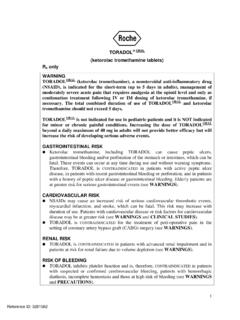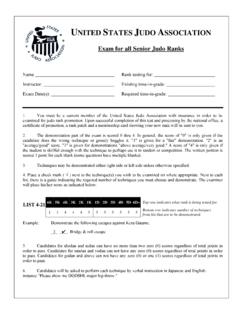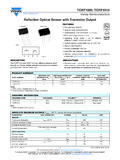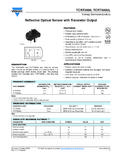Transcription of abuse - Canadian Resource Centre for Victims of Crime
1 Spousal abuse Prepared by the Canadian Resource Centre for Victims of Crime Introduction Spousal abuse is a problem that is entrenched in many societies around the world and Canada is no exception. Research in this area has shown that this type of violence has touched the lives of many Canadians. Although societal awareness and condemnation of the issue has increased in recent years, spousal abuse remains a hidden and persistent problem because of the power and control held by the abuser and the fear, intimidation and humiliation suffered by the Victims of this Crime . Perhaps people reading this document are living with violent, abusive spouses and are enduring repetitive victimization. Other readers may be those who were once Victims . Others still may be people who have been directly impacted by the by the abuse suffered by a close friend or family member.
2 These people know the fear that is instilled by the family tyrant and how difficult and dangerous the path to freedom can be. Another group of readers, are those concerned enough to care and to learn and to help, but who have never been victimized themselves. Victims of spousal abuse are not to blame for the violence they have been forced to endure. They deserve dignity, freedom from fear and compassionate acceptance by the community. What is spouse abuse ? Spousal abuse often occurs in relationships that are romantic in nature and where when one partner seeks to dominate and exert power over the other. In doing so, the relationship often deteriorates and may become violent. Emotional, verbal, psychological, financial, physical and sexual abuse is common in such relationships.
3 Spousal abuse can occur in husband-wife relationships, dating relationships, with common-law spouses and also in same-sex relationships. Who are the Victims of spousal abuse ? Although there are some studies that suggest men and women are both capable of violence, female Victims suffer more physically, emotionally and financially from abuse . While the majority of men are not violent, some men have learned to express their anger or insecurity through violence. Many men have come to believe that violence against a woman, child or another man is an acceptable way to control another person. Historically, women were considered the property of men. It was only decades ago that a husband was legally able to beat his wife with a stick as long as it was not thicker than his thumb. It has only been 20 years that it has been a Crime for a man to rape his wife.
4 What type of violence do women experience? Women and men report experiencing somewhat different forms of violence. Women in violent relationships were more likely than men to report what could be considered more severe forms of violence. For example, women were more than twice as likely as men to report being beaten (25% versus 10%), five times more likely to report being choked (20% versus 4%) and almost twice as likely to report being threatened by, or having a gun or knife used against them (13% versus 7%). Men in violent relationships were more likely than women to report being slapped (57% versus 40%), having something thrown at them (56% of men versus 44% of women) and being kicked, bit or hit (51% versus 33%).1 While all forms of violence are serious, the nature of the violence women in intimate relationships face is generally more brutal than the type of violence men face.
5 Why do men batter women? Many theories have been developed to explain why some men use violence against their partners. These theories include: family dysfunction, inadequate communication skills, stress, chemical dependency, lack of spirituality and economic hardship. These issues may be associated with battering of women, but they are not the causes. The batterer begins and continues his behavior because violence is an effective method for gaining and keeping control over another person and he usually does not suffer adverse consequences as a result of his behavior. In other words, it gets him what he wants. It ensures his partner will not leave him. Forms of abuse abuse is a pattern of behavior used to establish power and control over another person through fear and intimidation, often including the threat or use of violence.
6 It happens when one person believes they are entitled to control another. abuse may be emotional, verbal, psychological, economic, sexual, and physical. It may involve threats, intimidation, isolation, and a variety of other behaviors used to maintain fear, intimidation and power. Physical abuse It is important to recognize that physical abuse or battery escalates. It often begins with what is excused as trivial contact and behaviour such as threats, name calling, violence in her presence (such as punching a fist through a wall), and/or damage to objects or pets. Battery often escalates into more frequent and serious attacks such as pushing, slapping, pinching, punching, kicking, biting, sexual assault, tripping, and throwing. Finally, it may become life threatening with serious behaviors such as choking, breaking bones, or the use of weapons.
7 Sexual abuse Physical attack by the abuser is often accompanied by, or culminates in, sexual violence wherein the woman is forced to have sexual intercourse with her abuser or take part in unwanted sexual activity. Psychological abuse The abuser s psychological or mental violence can include constant verbal abuse , harassment, excessive possessiveness, isolating the woman from friends and family, 1 Family Violence in Canada: A Statistical Profile 2000, Canadian Centre for Justice Statistics, Catalogue no. 85-224-XIE. deprivation of physical and economic resources, and destruction of personal property including prized possessions or pets. Destruction of property and pets Destruction of property or abuse of pets can cause fear to the victim.
8 Unlike physical or sexual violence, this form of battering is done without actually attacking or ever touching the victim's body. With this type of abuse , the destruction is not random. The abuser exhibits anger by destroying the victim's favorite china that gets thrown against the wall, a gift he gave her during courtship, a pet kitten that is strangled, a family heirloom destroyed, etc. The objects chosen for destruction are aimed at hurting the victim emotionally as well as a demonstration of power and control. Occasionally the objects destroyed are selected randomly, but the destruction is still purposeful. To make a point, objects are thrown or destroyed and the victim never knows when the assaults on property will turn into physical assaults.
9 As is consistent with battering and abuse of any type, the victim is blamed for causing the outburst or destruction of the property. This type of violence normally does not stay contained within the area of property and pets, but escalates to include violence directed physically toward the victim. Don't ignore the danger of this type of abuse ! Verbal abuse There are many categories of verbal abuse . They encompass a variety of behaviors that will be easily recognizable by those experiencing them. - Yelled at - Nagged at - Called stupid - Talked to as a child - Ridiculed appearance - Threatened to take the children - Told me I was stupid, ugly, dumb - Called names - Called racial slurs - Told no one else would want me - Constant put-downs - Threatened to kill me - Belittled important things I accomplished It is important to note that people in non-abusive relationships may also experience being yelled at or nagged by their partner.
10 The difference is that this behaviour occurs occasionally and may be spurred by stress, anger and frustration. In abusive relationships, forms of verbal abuse are persistent and unrelenting. Verbal abuse also includes: Withholding: If there is a relationship, then there must be an exchange of information. Simply put, withholding is a choice one partner makes to keep virtually all one's thoughts, feelings, opinions, hopes and dreams to oneself and to remain silent and aloof toward the other partner. The verbal abuser may go for months without attempting to engage his partner in meaningful interaction. They may also withhold important information about money, finances or bank accounts. Jokes: This type of abuse is not done in jest. Disparaging comments disguised as jokes often refer to the feminine nature of the partner, to her intellectual abilities, or to her competency.








